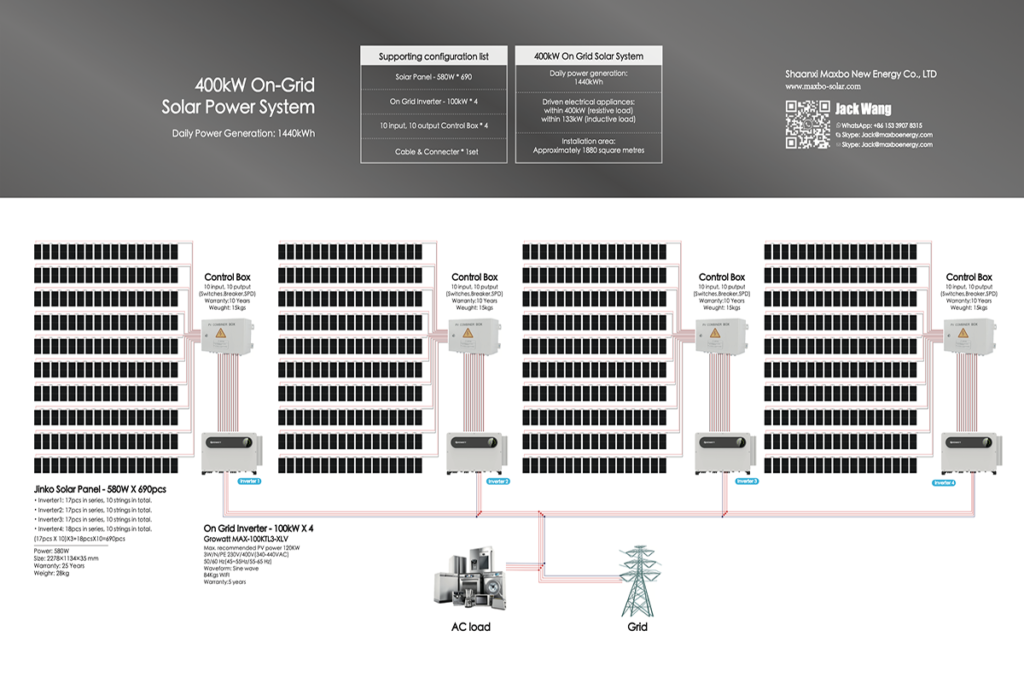Project Details
Background:
The Shandong farm covers a large area with ample space suitable for installing solar panels. The farm owners aimed to reduce their reliance on the grid and lower their energy costs while contributing to environmental sustainability. They recognized that investing in a solar PV system could provide long-term economic benefits alongside ecological advantages.
Project Objectives:
- To install a 400kW solar PV system to cover the farm’s energy needs.
- To ensure the system is grid-tied for times when solar generation is insufficient.
- To achieve payback on the investment within the estimated period.
- To enhance the farm’s sustainability profile and reduce its carbon footprint.

System Design:
The 400kW system was designed to utilize high-efficiency monocrystalline solar panels, known for their superior performance in terms of power generation. A total number of 1250 panels were deployed, each with a capacity of 320W, ensuring optimal coverage of the allocated area. The panels were mounted on ground-mounted structures to allow for easy maintenance and cleaning.
To integrate the system with the local grid, a sophisticated inverter system was installed. This system not only converted DC power from the panels into AC power usable by the farm but also allowed for efficient synchronization with the grid, enabling surplus energy to be fed back into the grid during periods of low consumption.



Implementation:
The project commenced with a thorough site assessment to determine the most suitable area for the solar panels. Following this, the installation process involved laying out the groundwork, setting up the mounting structures, and finally, installing the solar panels and inverters. The entire installation was executed by a professional team with expertise in large-scale solar projects.
Challenges:
- Climatic variations: The region experiences seasonal weather changes that could affect solar panel efficiency.
- Technical integration: Ensuring seamless integration with the existing grid posed technical challenges.
- Maintenance: Keeping a large number of panels clean and functioning at peak efficiency required a well-planned maintenance strategy.
Outcomes:
- The system became operational within the stipulated time frame, providing a reliable source of energy for the farm.
- Energy bills were significantly reduced as the farm started utilizing solar power for the majority of its energy needs.
- Surplus energy generated during peak sunlight hours was fed back into the grid, earning additional revenue through feed-in tariffs.
- The project helped in enhancing the farm’s green credentials and set a precedent for other agricultural enterprises looking to embrace renewable energy.


